

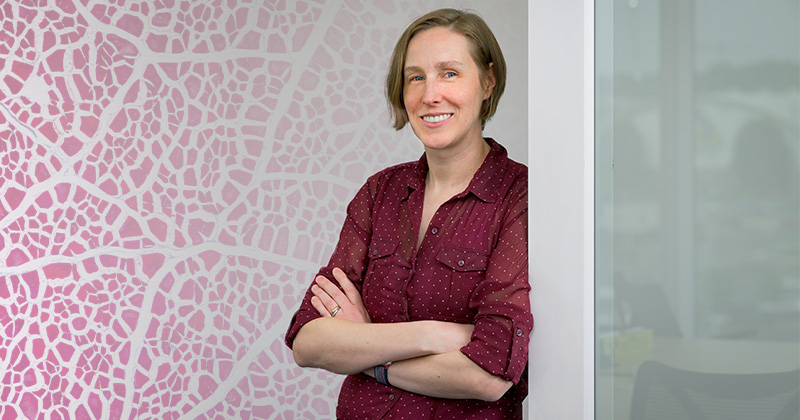
Halting a heart attack’s hidden harm
Photos by Evan Krape | Photo illustration by Jeffrey C. Chase September 05, 2025
UD’s Elise Corbin develops novel tools to advance cardiac research
Every 40 seconds, someone in the United States has a heart attack. Most survive, but at a cost. In the aftermath, the heart cells often stiffen in a process called myocardial fibrosis, a hidden scarring that can lead to lasting damage.
Elise Corbin, a biomedical engineer at the University of Delaware, is working to uncover what happens inside the heart muscle after a heart attack. A leader in the emerging field of mechanobiology, Corbin recently received the U.S. National Science Foundation’s prestigious Faculty Early Career Development Award — a $629,538 grant that supports her research and educational activities. She wants to map the “push-pull” interactions between cardiac cells and tissues as they communicate and navigate changes in their environment following a heart attack.
Scientists don’t fully understand how this “mechanical signaling” spreads across time and distance. Corbin is designing innovative tools to shed light on the process — and point the way to treatments that could stop the harmful cascade that often ends in heart failure.
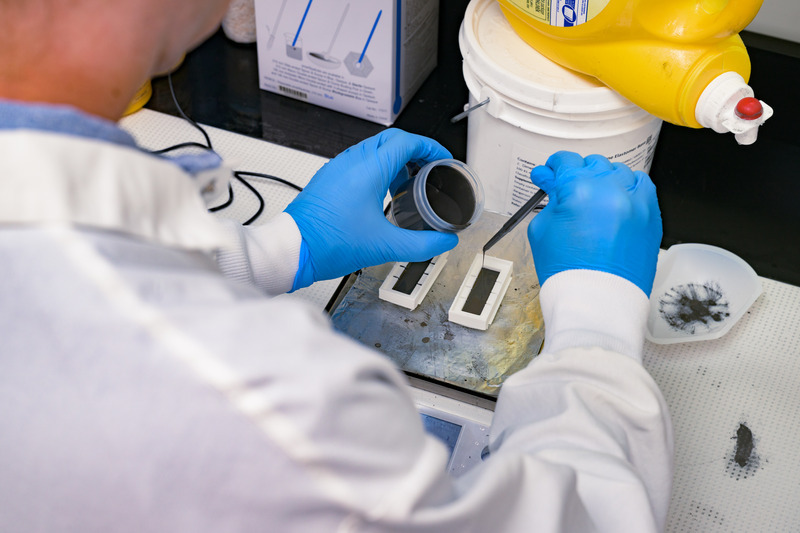
A magnetic solution to a biological mystery
Most labs that study mechanobiology — the science of how cells sense and respond to mechanical forces — use materials that change stiffness when light or heat is applied. But Corbin is working with something different: magnetic materials that stiffen instantly when exposed to a magnetic field.
“They’re well-known in pumps and actuators, but they’ve never really been used in this space,” she said. “We can make them as soft as cardiac tissue at baseline, then tune them up to cartilage-like stiffness with a quick magnetic pulse.” That shift — from about 8 kilopascals to 80 kilopascals — covers the stiffness range from healthy to diseased tissue.
The size of a microscope slide, at only about 3 inches long, an inch wide and a quarter-inch deep, Corbin’s platform is highly portable and simple by design. Made from an off-the-shelf silicone-based organic polymer (PDMS) mixed with carbonyl iron particles, it can be replicated by other researchers without specialized equipment.
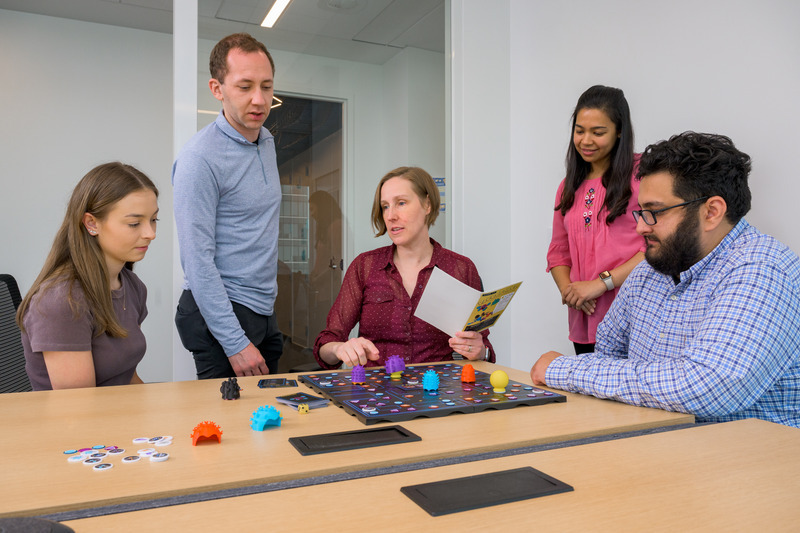
“If you want people to use your tools, they need to be simple, reliable and cheap,” she said.
Labs from the University of Pennsylvania to the University of Chicago and Washington University in St. Louis have adopted the tools she and her students have designed, a signal of their early impact.
Mimicking a heart attack in the lab
Corbin’s experiments start with 2D cell cultures and move into more complex 3D tissue models. In both, she uses magnets to create a localized stiffening — like the injury from a heart attack — then tracks how cells in the surrounding area respond.
Do they change shape? The cells spread out as they stiffen. Do they switch on certain genes? Activate mechanosensitive proteins like YAP, which is linked to conditions from arthritis to cancer? Also, at what distance from the original stiffening does the effect fade away?
To find the answers, her team is measuring cell responses in minutes, hours and days after the magnetic “injury.” They divide the sample into quadrants and track changes in things like actin filaments, which provide structural support in cells, and calcium signaling, which is critical to cellular messaging. Then the team collaborates with Ryan Zurakowski, professor and chair of the UD Department of Biomedical Engineering, to model the kinetics — how far, how fast and with what loss of signal strength the message spreads.
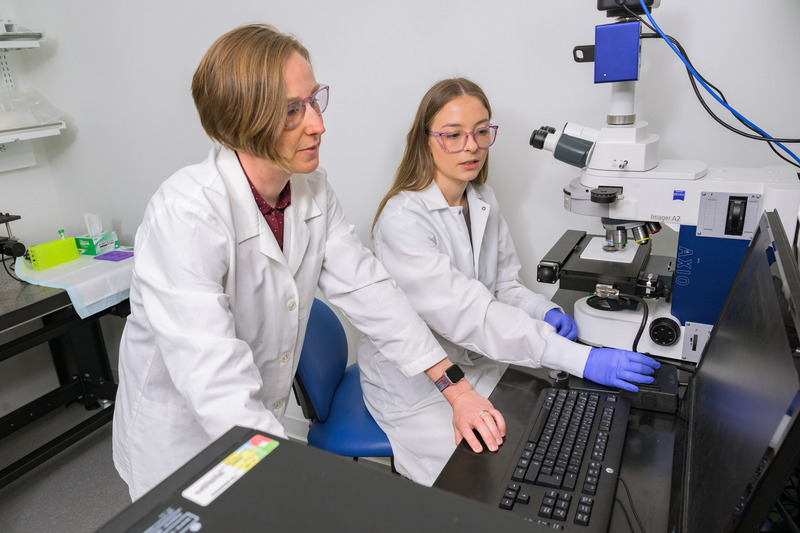
The analogy Corbin uses is familiar to anyone who played “telephone” as a kid: one cell “whispers” to its neighbor, and the message passes down the line. The question is, where does the message get garbled — or stop altogether?
In the aftermath of a heart attack, fibroblasts rush in to patch the damaged heart muscle, filling it with mostly collagen. But too much collagen — or the wrong type — can stiffen the heart and impair its ability to pump. By learning the thresholds and timelines for when stiffness triggers fibrosis, Corbin hopes to inform therapies that keep healing from turning into harm.
And the implications of her research extend beyond heart attacks. Wound healing, tissue engineering and diseases like arthritis all involve mechanical signaling.
From the lab to the game room
Corbin’s NSF CAREER Award also supports something you don’t often see in a biomechanics lab. Working with collaborators at Duke, University of Illinois, and the Teen Warehouse in Wilmington, Delaware, she and her team are creating educational board games that teach complex biology in playful, strategic ways.
The first prototype is a Pac-Man-inspired game where a microscopic hero races against time to protect your home from dangerous invaders like “Rona the Ruckus,” a coronavirus, and “Sneaky Sid,” an influenza. Another is a “Telestrations”-style drawing game that mimics cell communication. All are designed to be low-cost and easy to reproduce, with downloadable instructions and 3D-printable parts.
“Cells aren’t static. They have roles and personalities and they’re constantly moving and responding to their environment,” she said. “I want students to experience that in a way that sticks with them.”
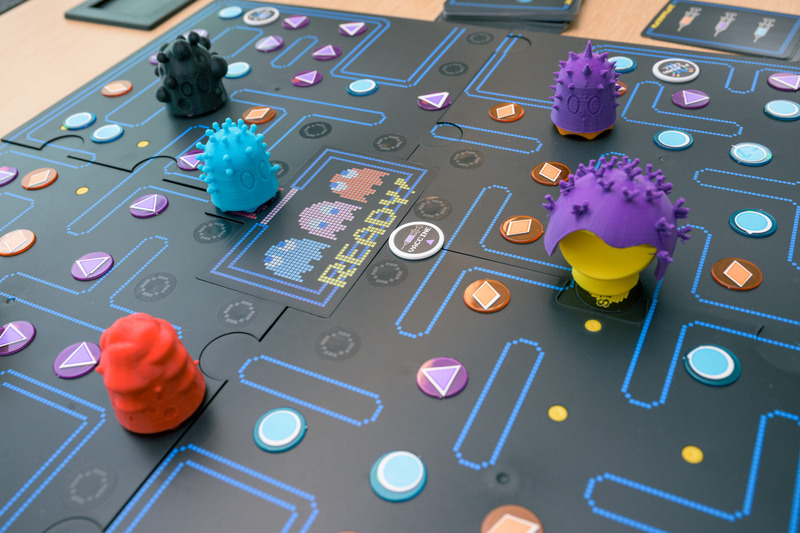
Bridging disciplines
As a postdoc at Penn, Corbin was the lone engineer in a sea of biologists — an experience that sharpened her ability to build tools that others could use.
“I felt less versed in the biology, but I knew the mechanics cold,” she said. “And that mix turned out to be valuable.”
Now, with NSF backing and a growing network of collaborators, she’s pushing mechanobiology in a new direction: studying not just how cells respond to stiffness, but how those responses spread over time and space.
“I’m head over heels that NSF saw the potential here,” she said. “It’s a new way of looking at mechanobiology, and I can’t wait to see where it takes us.”
Contact Us
Have a UDaily story idea?
Contact us at ocm@udel.edu
Members of the press
Contact us at mediarelations@udel.edu or visit the Media Relations website

